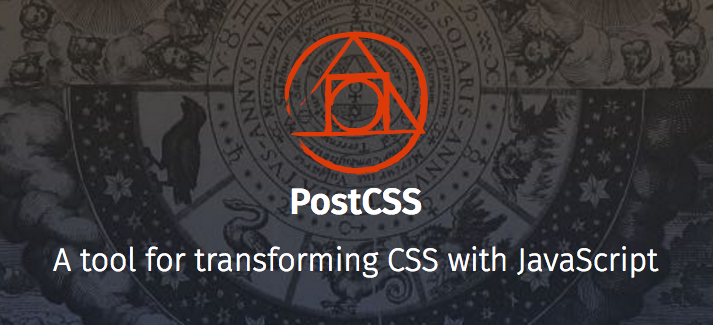Loading Styles
Loading styles is a standard operation. There are a lot of variants depending on the styling approach you use, though. I'll cover the most common options next. You can combine these approaches with the ExtractTextPlugin to get better output for your production build.
Loading CSS
Loading vanilla CSS is fairly straightforward as you can see in the example below. It parses the styles in the given include path (accepts an array too) while making sure only files ending with .css are matched. The definition then applies both style-loader and css-loader on it:
webpack.config.js
const common = {
...
module: {
loaders: [
{
test: /\.css$/,
loaders: ['style', 'css'],
include: PATHS.style
}
]
},
...
};
When Webpack evaluates the files, first css-loader goes through possible @import and url() statements within the matched files and treats them as regular require. This allows us to rely on various other loaders, such as file-loader or url-loader. We will see how these work in the next chapters.
file-loader generates files, whereas url-loader can create inline data URLs for small resources. This can be useful for optimizing application loading. You avoid unnecessary requests while providing a slightly bigger payload. Small improvements can yield large benefits if you depend on a lot of small resources in your style definitions.
After css-loader has done its part, style-loader picks up the output and injects the CSS into the resulting bundle. This will be inlined JavaScript by default. This is something you want to avoid in production usage. It makes sense to use ExtractTextPlugin to generate a separate CSS file in this case as we saw earlier.
Setting up other formats than vanilla CSS is simple as well. I'll discuss specific examples next.
T> If you want to enable sourcemaps for CSS, you should use ['style', 'css?sourceMap'] and set output.publicPath to an absolute url. css-loader issue 29 discusses this problem further.
Loading LESS

Less is a popular CSS processor that is packed with functionality. In Webpack using Less doesn't take a lot of effort. less-loader deals with the heavy lifting. You should install less as well given it's a peer dependency of less-loader. Consider the following minimal setup:
{
test: /\.less$/,
loaders: ['style', 'css', 'less'],
include: PATHS.style
}
There is also support for Less plugins, sourcemaps, and so on. To understand how those work you should check out the project itself.
Loading SASS

Sass is a popular alternative to Less. You should use sass-loader with it. Remember to install node-sass to your project as the loader has a peer dependency on that. Webpack doesn't take much configuration:
webpack.config.js
{
test: /\.scss$/,
loaders: ['style', 'css', 'sass'],
include: PATHS.style
}
Check out the loader for more advanced usage.
Imports in LESS and SASS
If you import one LESS/SASS file from an other, use the exact same pattern as anywhere else. Webpack will dig into these files and figure out the dependencies.
@import "./variables.less";
You can also load LESS files directly from your node_modules directory. This is handy with libraries like Twitter Bootstrap:
$import "~bootstrap/less/bootstrap";
Loading Stylus and YETICSS

Stylus is yet another example of a CSS processor. It works well through stylus-loader. There's also a pattern library known as yeticss that works well with it. Consider the following configuration:
webpack.config.js
const common = {
...
module: {
loaders: [
{
test: /\.styl$/,
loaders: ['style', 'css', 'stylus'],
include: PATHS.style
}
]
},
// yeticss
stylus: {
use: [require('yeticss')]
}
};
To start using yeticss with Stylus, you must import it to one of your app's .styl files:
@import 'yeticss'
//or
@import 'yeticss/components/type'
PostCSS

PostCSS allows you to perform transformations over CSS through JavaScript plugins. You can even find plugins that provide you Sass-like features. PostCSS can be thought as the equivalent of Babel for styling. It can be used through postcss-loader with Webpack.
The example below illustrates how to set up autoprefixing using it. It also sets up precss, a PostCSS plugin that allows you to use Sass-like markup in your CSS. You can mix this technique with other loaders to allow autoprefixing there.
webpack.config.js
const autoprefixer = require('autoprefixer');
const precss = require('precss');
module.exports = {
module: {
loaders: [
{
test: /\.css$/,
loaders: ['style', 'css', 'postcss'],
include: PATHS.style
}
]
},
// PostCSS plugins go here
postcss: function () {
return [autoprefixer, precss];
}
};
cssnext

cssnext is a PostCSS plugin that allows us to experience the future now. There are some restrictions, but it may be worth a go. In Webpack it is simply a matter of installing cssnext-loader and attaching it to your CSS configuration. In our case, you would end up with the following:
webpack.config.js
{
test: /\.css$/,
loaders: ['style', 'css', 'cssnext'],
include: PATHS.style
}
Alternatively, you could consume it through postcss-loader as a plugin if you need more control.
Conclusion
Loading style files through Webpack is fairly straight-forward. It supports even advanced techniques like CSS Modules. CSS Modules make CSS local by default. This can be a great boon especially for developers who work with component oriented libraries. The approach works beautifully there.